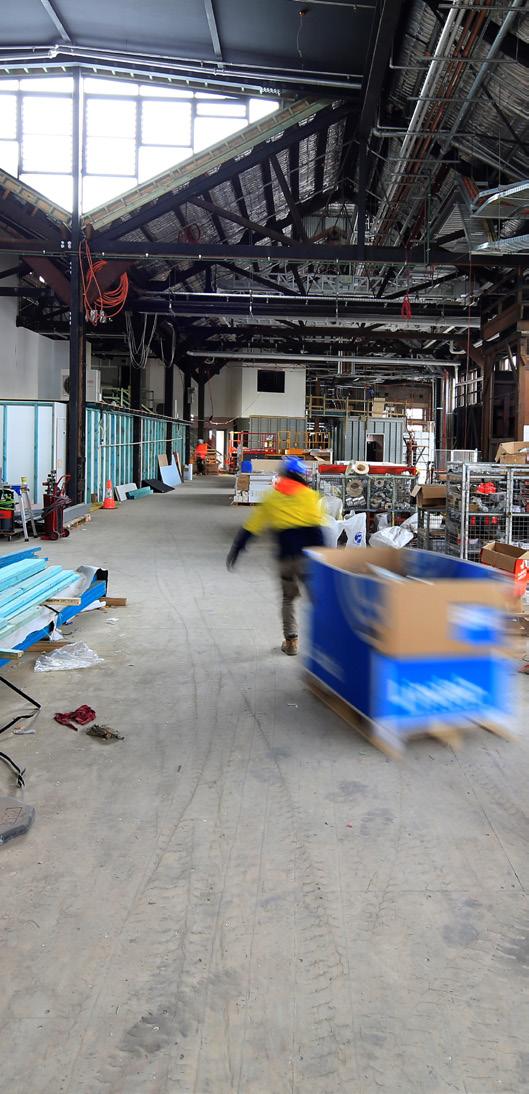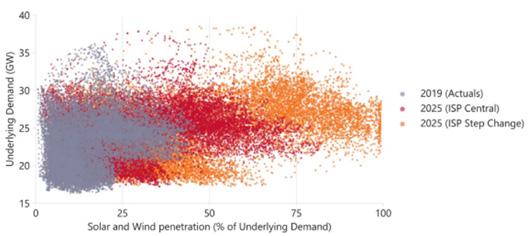
3 minute read
NSW DRIVING ECONOMIC RECOVERY THROUGH INFRASTRUCTURE
Simon Draper | Chief Executive Officer, Infrastructure NSW
The NSW infrastructure delivery program is continuing apace. Given the events of the past year, that alone is cause for celebration. Usually the focus of Infrastructure NSW is on longterm benefits, particularly as they relate to the underpinnings of prosperity – productivity growth, supporting population growth, enabling greater labour market participation and, increasingly, ensuring resilience to extreme events. Investments are guided by well-considered State Infrastructure Strategies, solid planning within infrastructure agencies and thorough evaluation and ongoing assurance of projects. We think long-term because the benefits are baked into our economy for many decades, and some projects take years to plan, design and deliver.
Now we are experiencing something unfamiliar in Australia – a need to uphold economic activity and employment through the direct and immediate effects of public investment. During the pandemic, households have experienced public health restrictions on activity and how they spend, albeit with some household income support by governments. It is also not surprising that many private investors have conserved their cash and bolstered balance sheets where possible, meaning new investment has been restrained. In that environment, direct expenditure by governments takes on a different hue. Having formed good fiscal habits, governments are being asked to rethink their approach.
At the start of the pandemic in March and April 2020, we were focused on the construction sector – how to provide confidence that activity would continue, how to fill the gap left by the withdrawal of private sector investors and how to maintain industry capacity. In this we would claim, if not perfection, then a good pass mark. The NSW Government and its agencies coordinated actions, approach and messages in a way that set a new benchmark. While the immediate benefits flow to construction, this also injected the wider economy with cash, confidence and a sense of normality.
We engaged widely through direct messages, online forums, online videos and case studies, but we also took more concrete steps. A project pipeline was published in the midst of the lockdown confirming commitment to projects. Commercial principles were released to address the concerns of contractors and suppliers fearful of being caught between fixed contracts and disruptions to operations. Project procurement processes continued as planned. Approved working hours on construction

Barangaroo Delivery Authority. Photo: Daniel Noaeen
sites were extended. Planning applications and the associated community consultation continued online and on schedule.
Further, the industry and government worked closely through a joint WHS working group to develop protocols and practices to manage infection on work sites, and provide confidence to health officials and police that construction activity could continue in a manner consistent with public health objectives. INSW worked closely with the NSW Chief Medical Officer, the head of SafeWork NSW and senior police officials to support continued construction activity.
Although there were moments of concern about the ability of skilled workers and specialists to move across borders, or availability of suitable personal protective equipment, each week most agencies reported that their projects were continuing with minimal impact, and that remains the case today. Ironically, while some state borders closed, collaboration between jurisdictions stepped up a level.
We are no longer scrambling to respond operationally, but the economic impacts remain as challenging as in the early days
FOR MORE INFORMATION PLEASE CONTACT
Infrastructure NSW
E: Mail@insw.com P: 02 9255 1700

of the pandemic. In NSW, the impact of infrastructure spending will be felt by continuing with the program laid out in successive Budgets, bolstered by additional funding announced in recent months. Considerable work has been done within the NSW Government to identify where additional investment can proceed within the timeframe required for stimulus. Lessons have also been drawn from the bushfire recovery on how to procure and implement large programs of smaller works, involving local contractors who may have been previously unknown to major contractors.
It is natural to give great weight to current circumstances, and perhaps underestimate the potential for recovery and rapid change. The experience since March 2020 has been dreadful in terms of the health of our citizens, business stress and unemployment. However, there have been useful lessons on how quickly we can respond to unexpected impacts, and how effectively industry and governments can collaborate. No matter what happens next, let’s hold onto those lessons.










